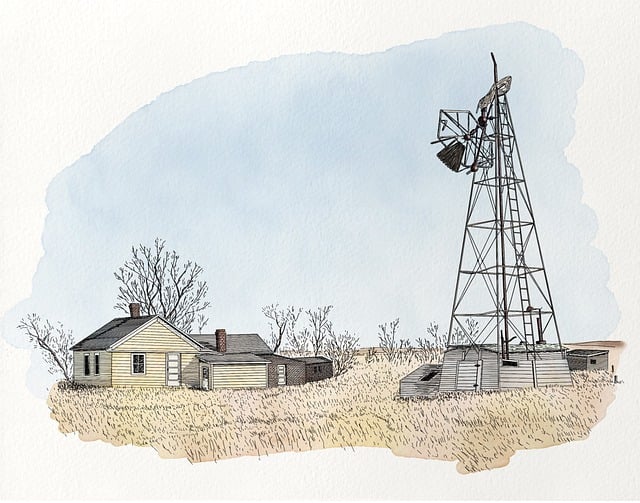Effective storm proofing and disaster protection are essential to safeguard homes from the destructive impacts of natural disasters. Homeowners should invest in impact-resistant materials like concrete and steel for foundations, and utilize reinforcement techniques such as hurricane straps for roofs, bracing walls, and anchoring utilities to enhance weather security. It's crucial to install flood barriers and sump pumps for water-related disasters, and to regularly maintain and inspect your home's structural safety features to ensure they remain effective against natural elements. Upgrading older structures to current seismic or wind load standards, including attaching homes to their foundations, improving roof trusses, and adopting flood protection systems, is vital for maintaining home resilience and structural safety. Staying informed about local weather risks and incorporating modern advancements in disaster protection technology are key components of a comprehensive approach to natural disaster safety. Regular maintenance, proactive emergency planning, and understanding the importance of home reinforcement contribute to a robust defense against the unpredictable forces of nature, ensuring a safer living environment and optimizing overall structural safety.
When it comes to safeguarding your home against the unpredictable forces of nature, proactive measures are paramount. This article delves into expert strategies for fortifying dwellings against the onslaught of natural disasters. From assessing and reinforcing foundations to implementing advanced storm proofing techniques, we explore a comprehensive range of home reinforcement strategies that bolster weather security. Homeowners will gain insights into integrating disaster protection into both new constructions and existing homes, ensuring long-term resilience against the vicissitudes of Earth’s elements. By understanding the importance of structural safety and staying abreast of the latest in home resilience, you can transform your house into a fortress of safety, ready to withstand the fury of storms, tremors, and other natural disasters.
- Strengthening Foundations: Home Reinforcement Strategies for Disaster Protection
- – Assessing your home's vulnerability to natural disasters
- – Essential reinforcements to consider, including structural bracing and secure anchoring of roofs, walls, and utility connections
- – The role of modern materials in enhancing home resilience against storms and high winds
- Weathering the Storm: Expert Tips on Storm Proofing Your Home
Strengthening Foundations: Home Reinforcement Strategies for Disaster Protection

Enhancing the resilience of one’s home against the ravages of natural disasters is a critical aspect of disaster protection. Home reinforcement strategies such as storm proofing are essential to weather security and ensure natural disaster safety. Reinforcing foundations with impact-resistant materials like concrete and steel can significantly reduce damage from high winds and flying debris. Additionally, bracing walls, anchoring roofs, and securing utilities are vital steps in fortifying a home against the forces of nature. Homeowners should also consider installing flood barriers and sump pumps to protect against water-related disasters, thereby increasing their overall home resilience.
Investing in structural safety through advanced home reinforcement techniques not only safeguards your property but also contributes to the community’s disaster protection efforts. Retrofitting older structures with modern seismic or wind load standards can enhance their performance during natural disasters. Strategies like reinforcing shear walls, attaching homes to their foundations, and upgrading roof trusses are key components of home reinforcement for weather security. By prioritizing disaster protection measures, homeowners can significantly reduce the potential for catastrophic damage, ensuring a safer environment for themselves and their loved ones during extreme weather events. Implementing these reinforcement strategies is a proactive step towards maintaining home resilience in the face of natural disasters.
– Assessing your home's vulnerability to natural disasters

When it comes to safeguarding your home against natural disasters, the first step is to conduct a thorough assessment of its vulnerability. This involves evaluating the potential impact of storms, floods, earthquakes, and other weather events that are common in your area. Understanding the specific risks can guide your decisions on storm proofing and disaster protection measures. Home reinforcement should be tailored to address these risks, incorporating weather security features such as impact-resistant windows, hurricane straps for roofs, and waterproof sealing for foundations. These improvements not only enhance natural disaster safety but also bolster home resilience, ensuring that your structural safety measures are robust enough to withstand the elements.
Homeowners must consider both proactive measures and emergency preparedness plans as part of their disaster protection strategy. Regularly maintaining and inspecting your home’s systems, such as electrical wiring, plumbing, and gas lines, can prevent disasters from escalating. Additionally, creating clear and accessible escape routes and having an inventory of belongings with associated photos or videos can facilitate a smoother recovery process in the unfortunate event that your home is affected by a natural disaster. Prioritizing natural disaster safety is not just about preventing entry into your home; it’s also about securing its contents and ensuring the well-being of its inhabitants. By investing in home resilience, you are not only safeguarding your property but also preparing for the unexpected, thereby enhancing overall structural safety against the unpredictable forces of nature.
– Essential reinforcements to consider, including structural bracing and secure anchoring of roofs, walls, and utility connections

When fortifying your home against the ravages of natural disasters, structural reinforcement is paramount for weather security. Essential to home resilience is the implementation of storm proofing measures such as bracing windows and doors to withstand high winds and flying debris. Additionally, secure anchoring of roofs, walls, and utility connections can significantly reduce damage from earthquakes, hurricanes, and heavy snow loads. Home reinforcement should prioritize the strengthening of weak points, ensuring that the structure can endure the stresses of natural disasters. By integrating weather-resistant materials and upgrading to impact-resistant windows and doors, homeowners enhance their property’s disaster protection capabilities, contributing to natural disaster safety and long-term structural safety. It is through these measures that homes are transformed into safe havens capable of withstanding the unpredictability of nature’s fury. Homeowners must also consider the regular maintenance and inspection of these reinforcements to maintain peak performance and effectiveness over time.
– The role of modern materials in enhancing home resilience against storms and high winds

In recent years, the advancement in modern materials has significantly bolstered home resilience against the fury of storms and high winds. These innovative building products are designed with weather security in mind, offering superior strength and durability compared to traditional construction materials. Homeowners seeking natural disaster safety can opt for reinforced concrete walls, impact-resistant windows, and specially engineered roofing systems that can withstand extreme conditions. Such enhancements not only protect the structural integrity of homes but also ensure occupant safety during adverse weather events, a critical aspect of disaster protection.
Furthermore, incorporating home reinforcement techniques such as hurricane straps, wind clips, and proper anchoring methods into the design of new constructions or retrofitting existing structures is essential for enhancing overall resilience. These measures work in concert to secure the home to its foundation, reducing the risk of structural failure during high-wind events. By prioritizing home resilience through strategic use of modern materials and smart design practices, homeowners can significantly mitigate the impact of natural disasters, safeguarding both their property and well-being.
Weathering the Storm: Expert Tips on Storm Proofing Your Home

When bracing your home against the fury of nature’s unpredictable wrath, storm proofing is paramount. Home reinforcement begins with a thorough assessment of your property’s vulnerabilities, particularly focusing on areas prone to wind damage or flooding. Experts recommend installing impact-resistant windows and doors, which can significantly reduce damage from high winds and flying debris. Additionally, securing your roof with hurricane straps and clips, and reinforcing garage doors—common points of failure—will enhance your home’s resilience against natural disasters.
Investing in disaster protection measures not only safeguards your home but also protects your family and assets. Implementing weather security features such as flood vents, sump pumps, and water-resistant insulation can prevent or mitigate the impact of water intrusion. Ensuring that all safety equipment, like fire extinguishers and first aid kits, are readily accessible in the event of a disaster is also crucial. Regular maintenance and updates to your home’s structural safety features are essential to maintain its resilience against the forces of natural disasters. Home resilience is a continuous process, adapting to the changing climate and emerging technologies in disaster protection. Stay informed about local weather patterns and heed all advisories to keep your family and home safe from the unpredictability of storms.
In conclusion, safeguarding one’s home against the unpredictable forces of nature is a multifaceted endeavor that requires careful planning and strategic implementation. By understanding your home’s susceptibility to natural disasters and taking proactive measures such as storm proofing and reinforcing structures with weather security in mind, you can significantly enhance its resilience. Employing modern materials and following expert tips on home reinforcement is key to natural disaster safety. Homeowners should prioritize structural safety and aim for robust home resilience to withstand the elements, ensuring that when disasters strike, their homes stand as safe sanctuaries. Taking these steps not only protects your property but also safeguards lives, making it an investment in peace of mind.
